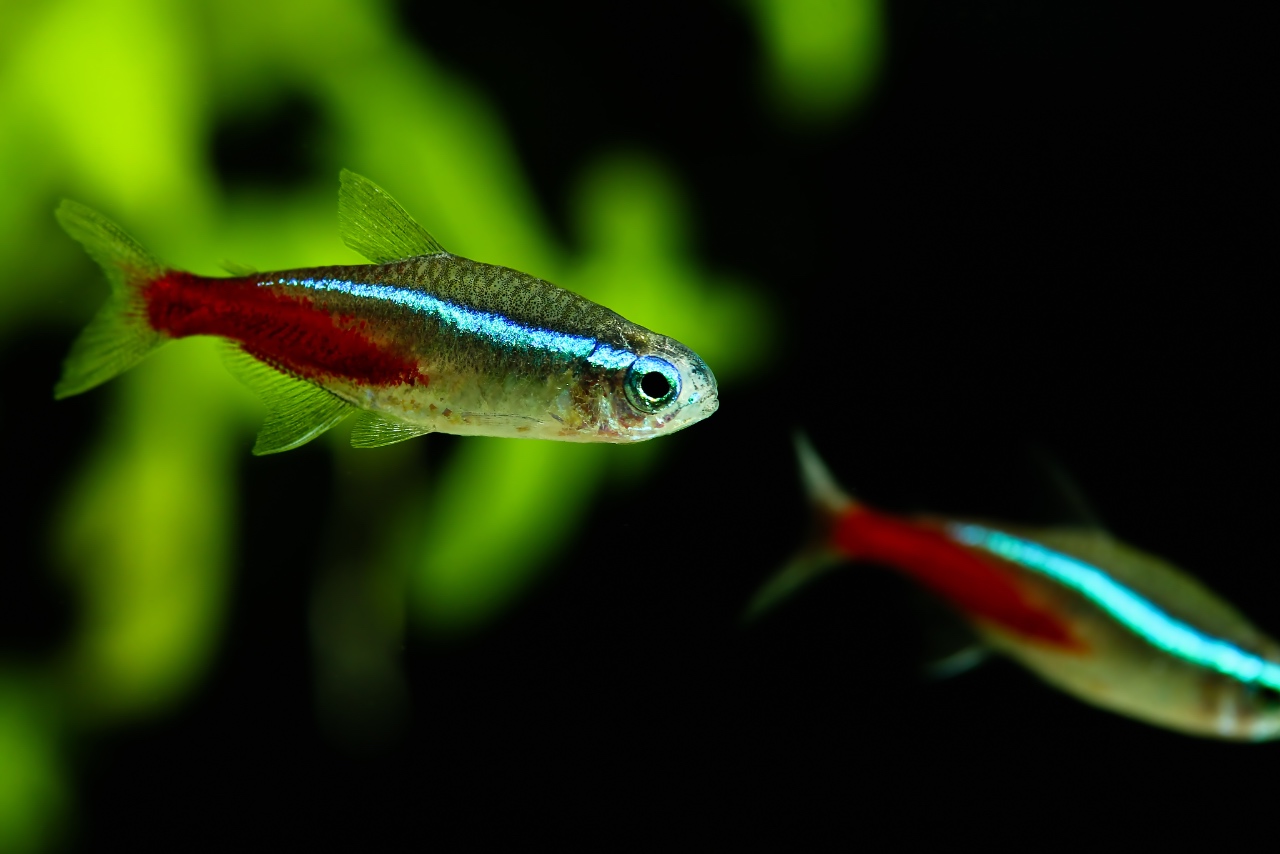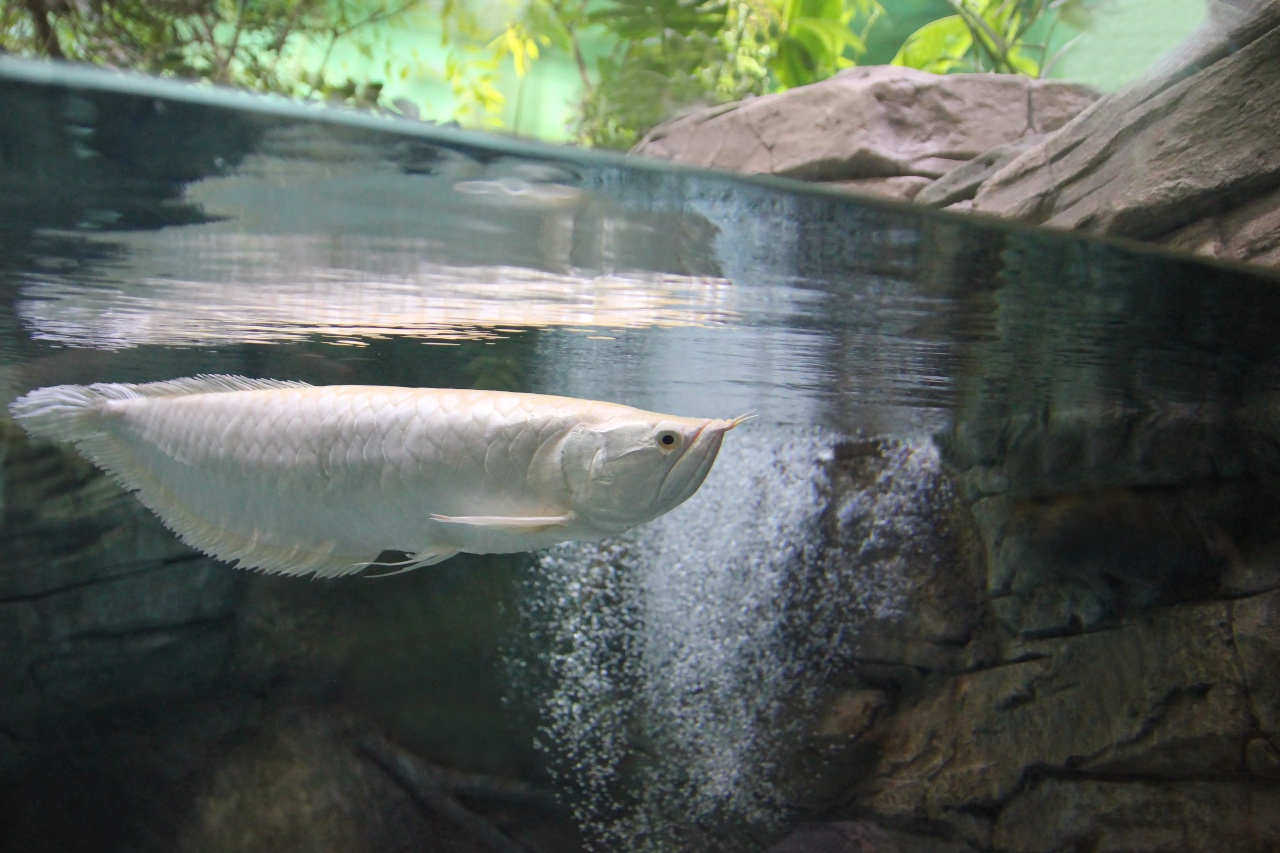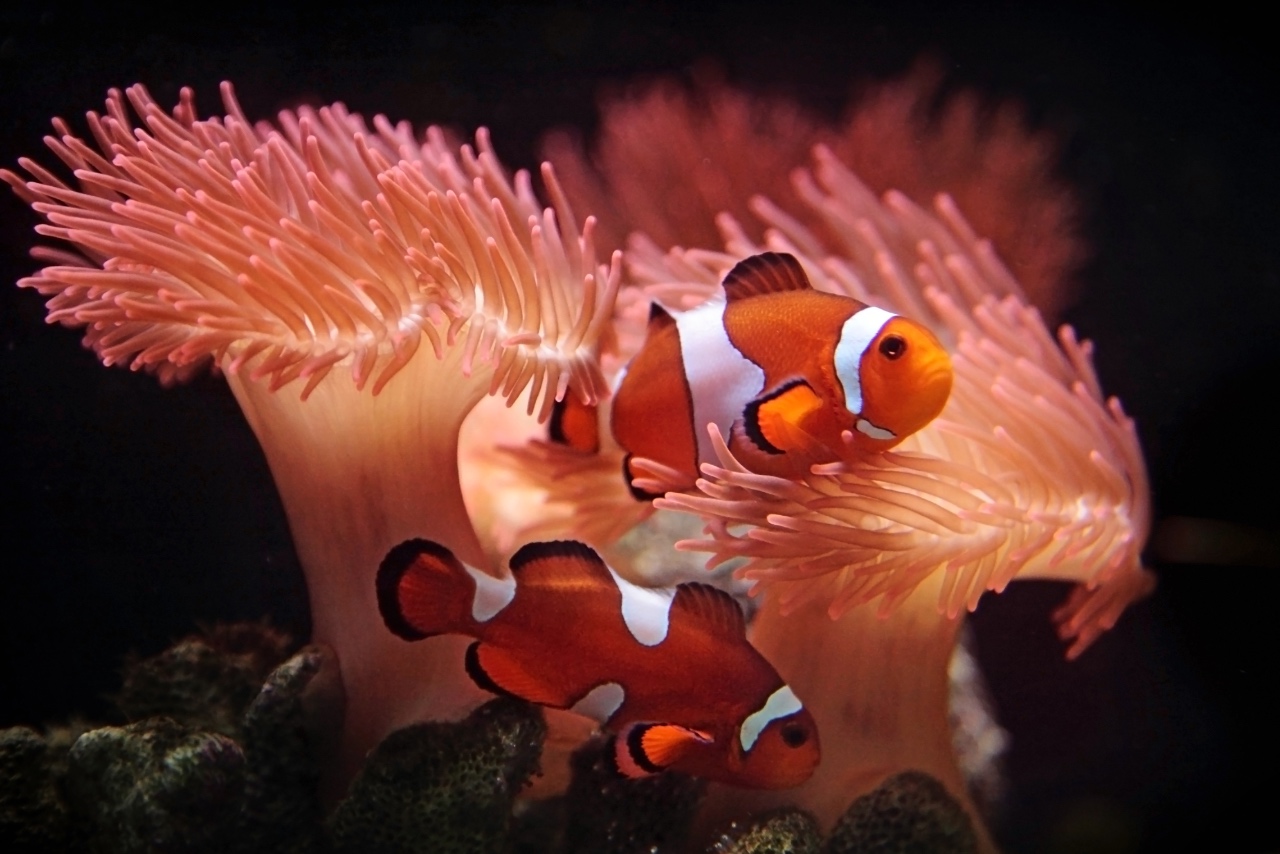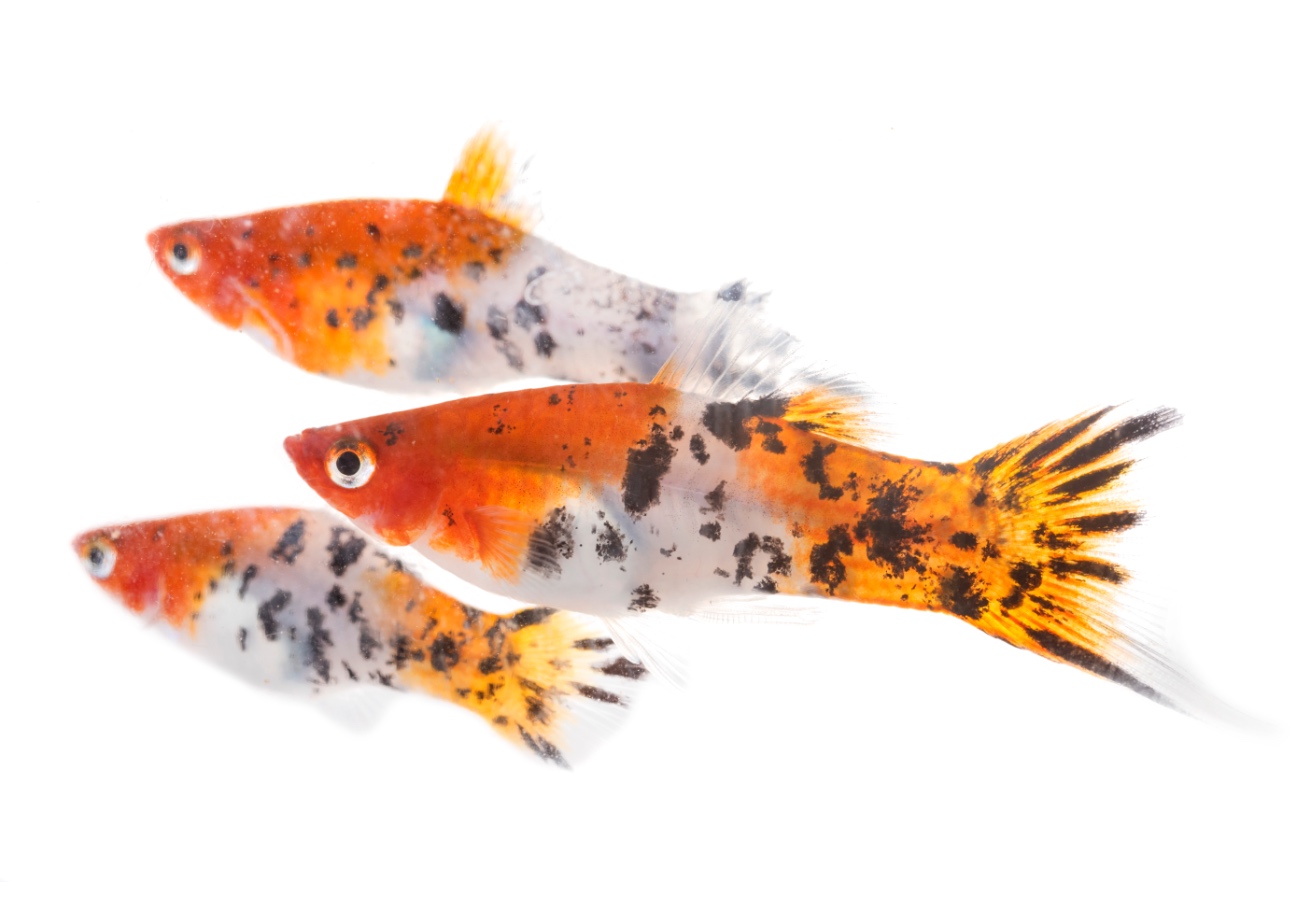The Neon Tetra fish is everything a beginner looks for before starting the fish keeping as a hobby.
Neon Tetra (Neon fish), a native of South America, is a non-aggressive fish that needs minimal care. These small freshwater fish are colorful, and if you are planning to add them to your community fish tank, they will make a great companion and add vividness and variety to your aquarium.
All these qualities make Neon Tetras famous among aquarists, whether a beginner or experienced. In today’s article, we will learn everything about Neon Tetras. Let’s dive in, then!
| Category | Rating |
|---|---|
| Family | Characidae |
| Temperament | Peaceful |
| Care Level | Easy |
| Diet | Omnivorous |
| Size | 1.5 |
| Color Form | Blue, Red, Translucent |
| Lifespan | 8 Years |
| Tank Set-Up | Freshwater: Planted |
| Minimum Tank Size | 10 Gallons |
Neon Tetra Overview

Neon Tetras, from the Characidae family, were first discovered in the Amazon Jungles in 1934. They are so famous that approximately 2 million Neon Tetras are sold in the US alone each month. Also known as Paracheirodon innesi, Hyphessobrycon innesi Myers, or Cheirodon innesi, they have a range of colors and a vivid appearance.
Neon tetras are easy to maintain and quite easy to breed in captivity. They are community fish and love to live in the school.
Neon Tetra Behavior
As mentioned above, neon tetras are small, peaceful community fish that love being surrounded by other fish. Is there a minimum number of neon tetras to keep together? Yes, it is better to keep at least 15 Neon Tetras in an aquarium. Schools smaller than that will not feel safe and won’t thrive in the tank.
Neon Tetra Lifespan
They can be seen swimming in the middle of the tank. You can even keep them with other fish who share the same temperament and size. They can live up to 5 years in the artificial environment, while in the wild, they can live up to 8 years.
Neon Tetra Appearance

Neon Tetras are known not only for their bright blue and red color combination but also for their ability to turn off and on their colors when hiding from predators or sleeping.
They have a short spindle-like body with a round nose and large eyes (which take up most of the space on their heads). They can grow up to 1.5 inches and, in some conditions, stretch up to 2.5 inches. The Neon Tetra females are slightly shorter than males.
Their vivid appearance and bright color are what attract everyone towards them. A bright turquoise blue characterizes Neon Tetras. The color looked brighter on the top and faded on the lower part. The faded part looks translucent with a bright red stripe that starts from the middle and stretches down the tail.
Their bright blue and red combination helps them locate each other and adds attractiveness to their beauty. The transparent part helps Neon Tetras mix with the background and hide from predators.
They can even turn off the iridescent appearance when they feel highly threatened or while sleeping. Their body’s faded coloration indicates stress or poor health.
Cardinal Tetra vs Neon Tetra

Neon Tetra and Cardinal Tetra have almost the same appearance. The one who doesn’t know the difference can get easily confused between them.
The major difference between them is the bright red strip. The red strip in Neon Tetra starts only from the middle. In contrast, it starts from below the eyes and stretches to the entire length of Cardinal Tetras.
Neon Tetra Tank Setup

Neon Tetra Natural Habitat
Neon Tetras are commonly found in the rivers of tropical countries like Brazil, South America, Peru, and Colombia. The majority are located in the Amazon River basin.
These rivers have murky waters as they flow through dense forest canopies. They block most of the daylight, and these beautiful Tetras are found lurking within these dark waters with fallen leaves.
They prefer living in school, and their vivid coloration and appearance help them to locate each other.
Tank Conditions and Requirements
If you want your Neon Tetra to thrive, make sure to duplicate the water conditions and environment of their native for them. For this, you will need a dark substrate and dense plantation. This means that the conditions of Neon fish tanks should be similar to those of their natural habitat.
| Conditions | Parameters |
|---|---|
| Temperature | 70°F to 81°F |
| pH | 6.0 to 7.0 |
| Water Hardness | Less or equal 10mg/l |
| Substrate | Dark-colored with rocks and pebbles |
| Plantation | Dense |
| Lightning | Subdued, 2 watts per gallon (maximum) |
For filtration, use a sponge filter, as Neon Tetras produce less biowaste than other fish. Change 25% of the tank water once a week. This will keep the tank clean and maintain water conditions, which can be very harmful to them if conditions rapidly change.
How Big of a Tank Do Tetras Need?
The Neon fish tank size depends on the number of fish you are planning to keep and the type of aquarium you have. If you are planning to keep Tetras in School with a minimum of 15 members, then we recommend having a tank with a capacity of at least 20 gallons.
Neon Tetra Diet

Neon Tetras are omnivores, so they can be fed a variety of foods. In their natural habitat, they feed on algae, larvae, and other tiny invertebrates.
You can feed them frozen to live and premade to homemade food, and they will eat everything happily. Also, to maintain their nutrition level, include high-quality flakes and pellets in their diet.
Neon Tetra Food
Tubifex, Brine Shrimp, Blood Worms, and Daphnia can be added to their diet as supplements. Make sure to crush the food into small pieces; otherwise, they won’t be able to swallow them. For live food like worms, feed the small ones instead of crushing them.
Feeding them twice daily and only the amount they can finish in 3 minutes is more than enough for Neon Tetras. You can reduce it to once a day as they reach maturity.
Also, ensure there is variety in food to keep them excited and maintain their nutrition level. The deficiency can affect their growth and lead to illness.
Neon Tetra Tank Mates

Neon Tetras are peaceful and will make a great companion to other non-aggressive fishes. The fish of the same size and temperament, who are not territorial, will live peacefully with them. They should be bottom-dwellers as well.
For the companion fishes, you can choose Dwarf Cichlids, Small Catfish (e.g., Cory), Gourami (Avoid the Giant, Pearl, and Opaline), and Barbs, etc. while avoiding Bettas, Cichlids, Angelfish, etc.
Avoid fish of large size and wide mouths. It won’t take much time for them to make your Neon Tetra their food.
Neon Tetra Disease
No fish is safe from catching a disease. Neon Tetra Disease is quite common in this species. Other variants, such as false Neon Tetra Disease, are also very common. Both diseases show the same symptoms and are as deadly as the other. It was named after Neon Tetras, as this disease was first found in their species.
| Disease | Neon Tetra Disease | False Neon Tetra Disease |
|---|---|---|
| Caused by | Parasite (Pleistophora hyphessobryconis) | Bacteria (Flavobacterium columnare) |
| Found in | Species of Tetra and some other breeds of fishes | same |
| Cure | No cure | Antibiotic bath or oral medication |
The false Neon Tetra disease can be cured if diagnosed in time. Both the disease show the same symptoms –
- Sudden loss of color
- Dwelling at the bottom and reduced activity
- White patches on mouth, tail, sides, or back
- Restlessness, especially at night
- In some cases, the spine may become curved and the body lumpy
There is no cure for real Neon Tetra Disease, while in the case of false Neon Tetra, the fish can be saved if diagnosed on time. The cure includes antibiotic baths, antibiotic food, and feeding medicine.
If one of the fish shows symptoms of the disease, separate it from the tank, as other fish can become infected. This disease can be caught by eating poor-quality food or other infected living organisms.
To prevent this disease, you can do the following –
- Always check the quality of food and purchase the food only from licensed stores.
- Remove the dead organisms from the tank before the fish can feed on them.
- Separate the infected fish from the main tank.
- Check the health of the fish or any organism before adding them to the tank.
- Regularly check the coloration and health of the fish.
Neon Tetra Breeding

Keeping Neon Tetras alive is much easier than breeding Them. They need specific conditions and parameters for trigger mating, which should only be done in the presence of experienced aquarists as it can become tricky for beginners.
Before making the parameters suitable for them, you should be able to distinguish between male and female Neon Tetras. The males are slimmer, so the blue strips look straight on their abdomen area. In contrast, the females are round, so the blue strip looks curved.
For mating, you can put Neon Tetras in a separate tank, as they need different temperatures and water conditions than the main tank. The pH should range between 6.0 and 7.0, while the temperature should be fewer degrees below 75oF. Any more or less than this can affect their health.
Neon Tetras are also known as ‘egg-spreaders’ because of their breeding. The female lays approximately 100 eggs for the male to fertilize. Once the eggs are fertilized, remove both adult fish from the tank and put them back in the main tank. This is because they can eat the eggs without realizing they belong to them.
Soon, the eggs will hatch, but the fries will stay there to soak up all the nutrition. This may take 2 to 3 days. After that, you can feed them the same food as adults by crushing it into smaller pieces.
Should You Keep Neon Tetras?
Neon Tetras are quite common and popular among fish-keeping enthusiasts. They are ideal for anyone looking for simple but beautiful fish to start a hobby.
They are also ideal for adding variety and color to your tank. To make your Neon Tetra healthy and thriving, keep the water conditions constant and feed it healthy food.
Also, make sure to clean the fish tank regularly and check for any symptoms of the diseases we learned about in the above paragraph.
What do you think of Neon Tetra? Are you going to add these beautiful fish to your tank? Let us know through your comments.



